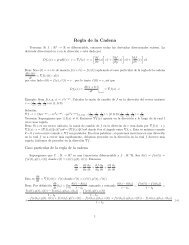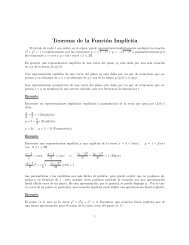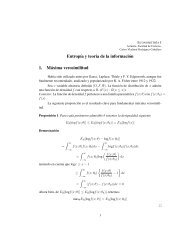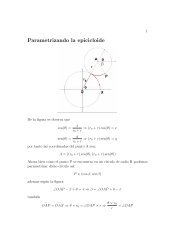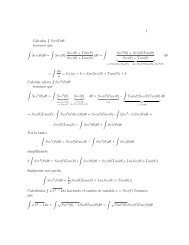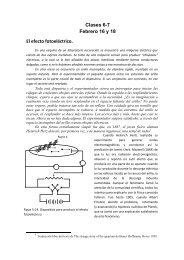"Surely You're Joking, Mr. Feynman!" - unam.
"Surely You're Joking, Mr. Feynman!" - unam.
"Surely You're Joking, Mr. Feynman!" - unam.
Create successful ePaper yourself
Turn your PDF publications into a flip-book with our unique Google optimized e-Paper software.
my time learning the biology part.<br />
There was one useful lab technique I learned in that course which I still use today.<br />
They taught us how to hold a test tube and take its cap off with one hand (you use your<br />
middle and index fingers), while leaving the other hand free to do something else (like<br />
hold a pipette that you're sucking cyanide up into). Now, I can hold my toothbrush in one<br />
hand, and with the other hand, hold the tube of toothpaste, twist the cap off, and put it<br />
back on.<br />
It had been discovered that phages could have mutations which would affect their<br />
ability to attack bacteria, and we were supposed to study those mutations. There were<br />
also some phages that would have a second mutation which would reconstitute their<br />
ability to attack bacteria. Some phages which mutated back were exactly the same as they<br />
were before. Others were not: There was a slight difference in their effect on bacteria <br />
they would act faster or slower than normal, and the bacteria would grow slower or faster<br />
than normal. In other words, there were "back mutations," but they weren't always<br />
perfect; sometimes the phage would recover only part of the ability it had lost.<br />
Bob Edgar suggested that I do an experiment which would try to find out if the<br />
back mutations occurred in the same place on the DNA spiral. With great care and a lot<br />
of tedious work I was able to find three examples of back mutations which had occurred<br />
very close together closer than anything they had ever seen so far and which partially<br />
restored the phage's ability to function. It was a slow job. It was sort of accidental: You<br />
had to wait around until you got a double mutation, which was very rare.<br />
I kept trying to think of ways to make a phage mutate more often and how to<br />
detect mutations more quickly, but before I could come up with a good technique the<br />
summer was over, and I didn't feel like continuing on that problem.<br />
However, my sabbatical year was coming up, so I decided to work in the same<br />
biology lab but on a different subject. I worked with Matt Meselson to some extent, and<br />
then with a nice fella from England named J. D. Smith. The problem had to do with<br />
ribosomes, the "machinery" in the cell that makes protein from what we now call<br />
messenger RNA. Using radioactive substances, we demonstrated that the RNA could<br />
come out of ribosomes and could be put back in.<br />
I did a very careful job in measuring and trying to control everything, but it took<br />
me eight months to realize that there was one step that was sloppy. In preparing the<br />
bacteria, to get the ribosomes out, in those days you ground it up with alumina in a<br />
mortar. Everything else was chemical and all under control, but you could never repeat<br />
the way you pushed the pestle around when you were grinding the bacteria. So nothing<br />
ever came of the experiment.<br />
Then I guess I have to tell about the time I tried with Hildegarde Lamfrom to<br />
discover whether peas could use the same ribosomes as bacteria. The question was<br />
whether the ribosomes of bacteria can manufacture the proteins of humans or other<br />
organisms. She had just developed a scheme for getting the ribosomes out of peas and<br />
giving them messenger RNA so that they would make pea proteins. We realized that a<br />
very dramatic and important question was whether ribosomes from bacteria, when given<br />
the peas' messenger RNA, would make pea protein or bacteria protein. It was to be a very<br />
dramatic and fundamental experiment.<br />
Hildegarde said, "I'll need a lot of ribosomes from bacteria."<br />
Meselson and I had extracted enormous quantities of ribosomes from E. coli for




